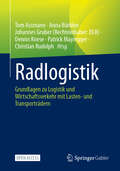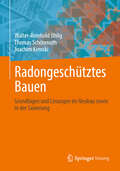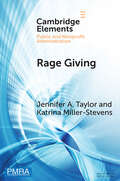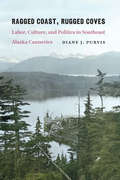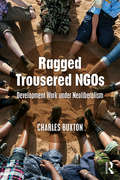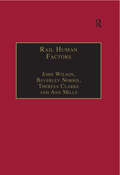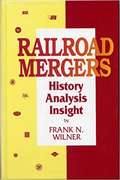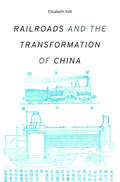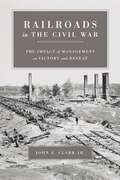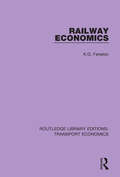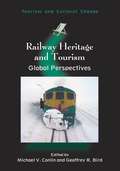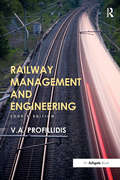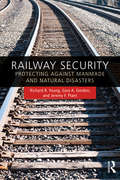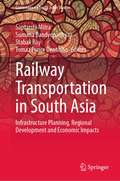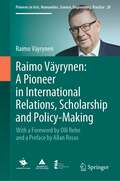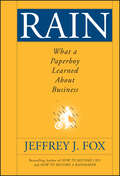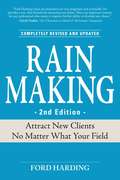- Table View
- List View
Radiometer, 2003
by John R. Wells Galen DanskinIn 2003, Radiometer was the world's leading supplier of blood gas analysis equipment and accessories for critical care patients. Based in Denmark, Radiometer sold through a combination of sales subsidiaries and distributors around the world, and generated sales of over DKr 1,791 million ($272 million). Blood gas analysis formed part of the $27.7 billion in-vitro diagnostic market. Although sales were strong, Radiometer remained focused on its future. The market for blood gas analysis was growing slowly, driven mainly by new technologies that threatened to displace the high volume testing equipment that Radiometer supplied. Radiometer's recent attempts at competing in these new technologies had failed. Should it remain focused on blood gas analysis and redouble its efforts? Or should it turn to other opportunities for growth? CEO and controlling stockholder, Johan Schroder, had denied rumors of a potential sale, but an acquisition by a stronger partner could help the company expand into the United States. How should the company position itself for future success?
Radiometer, 2013
by John R. Wells Galen DanskinIn 2013, Radiometer continued to lead the world in blood gas analysis equipment and accessories, selling direct and through distributors to hospital central laboratories, point-of-care locations, and non-hospital medical locations. Founded in 1935 and based in Denmark, Radiometer was acquired in January 2004 by US-based Danaher Corporation. Under Danaher's direction, Radiometer began an intensive program of process improvements using the Danaher Business System (DBS), an iterative tool system and company culture that sought to continuously improve the company's growth and lean and leadership capabilities. However, as CEO Peter Kurstein reviewed the successes of the last ten years, he conceded that Radiometer still faced significant challenges. Progress in the USA, the world's largest market, remained elusive. How would Radiometer breakthrough in the US? Then there was the issue of long-term growth. Roche and Siemens were investing heavily in multiple diagnostics segments. How should Radiometer respond? Which other segments of diagnostics should Radiometer consider? Quest Diagnostics was selling HemoCue, a Swedish based global niche leader in hemoglobin testing. Would acquiring them make sense for Radiometer?
Radlogistik: Grundlagen zu Logistik und Wirtschaftsverkehr mit Lasten- und Transporträdern
by Johannes Gruber Tom Assmann Anna Bürklen Dennis Knese Patrick Mayregger Christian RudolphAus den Straßen europäischer Städte sind sie kaum noch wegzudenken: Lasten- und Transporträder. Im Personenverkehr sind sie für Einkäufe und Kindertransporte bereits Standard, ebenso im Kuriersegment sowie der Paketzustellung. Besonders in der Logistik und im Wirtschaftsverkehr liegt noch ein sehr breit gefächertes und ausdifferenziertes Einsatzpotenzial. Die Renaissance des Lastenrads als Transportmittel nimmt auch im gewerblichen Sektor an Bedeutung zu. Das Open Access-Buch bietet in dieser Form erstmals systematisch aufbereitetes Wissen für Praktiker in Wirtschaft, Politik und Verwaltung sowie für Studierende in den Bereichen Logistik und Verkehrsplanung. Zu den einzelnen Aspekten der Radlogistik (u. a. Fahrzeuge und Technik, gewerblicher Einsatz, logistischer Einsatz, Planung, Infrastrukturen, intermodale Einbindung, Best-Practice-Beispiele, Entwicklungstrends) haben national renommierte Wissenschaftler:innen Beiträge verfasst. Dieses Buch bündelt den aktuellen Wissensstand auf Basis von Forschungsergebnissen und stellt ihn kompakt und übersichtlich dar.
Radongeschütztes Bauen: Grundlagen und Lösungen im Neubau sowie in der Sanierung
by Walter-Reinhold Uhlig Thomas Schönmuth Joachim KemskiDas Thema des radonsicheren Bauens und Sanierens ist spätestens mit dem 2017 beschlossenen und 2018 in Kraft getretenen neuen deutschen Strahlenschutzgesetz im Bauen angekommen. Der Schutz vor erhöhter Radonkonzentration in der Raumluft ist aber schon seit geraumer Zeit ein wichtiges Thema, da die gesundheitlichen Gefährdungen, die durch eine hohe Radonkonzentration in der Raumluft entstehen, seit vielen Jahren bekannt und sehr gut dokumentiert sind.In der Veröffentlichung wird ein umfassender Überblick über die Grundlagen des Radonschutzes, die Messung von Radon in der Raumluft sowie alle heute bekannten und erprobten baulichen und lüftungstechnischen Lösungen des Radonschutzes sowie deren Anwendung im Neubau und der Sanierung gegeben. Damit wird allen in der Planung und Bauausführung Tätigen ein wichtiges Kompendium an die Hand gegeben, um dieses noch relativ neue Thema sicher und in einem wirtschaftlich vertretbaren Rahmen in Planung und Bauausführung umzusetzen.
Rage Giving (Elements in Public and Nonprofit Administration)
by Katrina Miller-Stevens Jennifer A. TaylorAfter the 2016 election upheaval and polarized public discourse in the United States and the rise of radical-right and populist parties across the globe, a new phenomenon in online charitable giving has emerged – donating motivated by rage. This Element defines this phenomenon, discusses its meaning amidst the current body of research and knowledge on emotions and charitable giving, the implications of viral fundraising and increased social media use by both donors and nonprofit organizations, the intersectionality of rage giving and its meaning for practitioners and nonprofit organizations, the understanding of giving as a form of civic engagement, and the exploration of philanthropy as a tool for social movements and social change. Previous research shows contextual variation in charitable giving motivations; however, giving motivated by feelings of anger and rage is an unstudied behavioral shift in online giving.
Ragged Coast, Rugged Coves: Labor, Culture, and Politics in Southeast Alaska Canneries
by Diane J. PurvisRagged Coast, Rugged Coves explores the untold story of cannery workers in Southeast Alaska from 1878, when the first cannery was erected on the Alexander Archipelago, through the Cold War. The cannery jobs brought waves of immigrants, starting with Chinese, followed by Japanese, and then Filipino nationals. Working alongside these men were Alaska Native women, trained from childhood in processing salmon. Because of their expertise, these women remained the mainstay of employment in these fish factories for decades while their husbands or brothers fished, often for the same company. Canned salmon was territorial Alaska&’s most important industry. The tax revenue, though meager, kept the local government running, and as corporate wealth grew, it did not take long for a mix of socioeconomic factors and politics to affect every aspect of the lands, waters, and population. During this time the workers formed a bond and shared their experiences, troubles, and joys. Alaska Natives and Chinese, Japanese, and Filipino immigrants brought elements from their ethnic heritage into the mix, creating a cannery culture. Although the labor was difficult and frequently unsafe, the cannery workers and fishermen were not victims. When they saw injustice, they acted on the threat. In the process, the Tlingits and Haidas, clans of Southeast Alaska for more than ten thousand years, aligned their interests with Filipino activists and the union movement. Ragged Coast, Rugged Coves tells the powerful story of diverse peoples uniting to triumph over adversity.
Ragged Trousered NGOs: Development Work under Neoliberalism
by Charles BuxtonRagged Trousered NGOs is a compelling first-hand account of the NGO sector and wider civil society over the past 40 years, examining how and why people take collective action and engage in social development projects. The book explores different organisational and methodological aspects of NGO work and social action, asking what was possible to achieve at a grass-roots level at different times, in different economic and political contexts in the East and West. Adopting a critical perspective, the author argues that social action continues to play a vital and varied role, and yet it struggles to challenge deep-rooted power relations and traditional forms of behaviour in today's unequal world. In particular, the book draws on examples from the former Soviet Union in transition, and the UK's voluntary sector over the last 40 years, with a view to challenging Eurocentric views about organisations and communities. The analysis adopts a Gramscian view of hegemony and an internationalist and anti-war position on key issues arising in recent armed conflicts and the new cold war with Russia. The book concludes by addressing the challenges for development workers, noting the precarious nature of NGO work despite its many achievements, and suggesting ways in which social activists can pick up more strength and support. This book's practical perspective on progressive forms of organisational management will be of considerable interest to civil society and NGO development workers, as well as to researchers and students in the fields of international development, politics, sociology and regional studies.
Rahmenbedingungen der Entscheidungsfindung bei Gründer: Untersuchung zu den Zusammenhängen zwischen Kontingenz, Kognition und Strukturdeterminanten in gründungsunternehmerischen Entscheidungsprozessen
by Sebastian L. GrünerDie vorliegende Arbeit thematisiert Herausforderungen unternehmerischer Entscheidungen unter Unsicherheit. Sie behandelt die in der aktuellen Forschung einseitige Fokussierung auf Effectuation und Causation und problematisiert deren unzureichende Mikrofundierungen. Die Arbeit greift die mangelnde Trennschärfe der genannten Entscheidungslogiken und deren erschwerten Praxistransfer auf und bearbeitet sie schwerpunktmäßig wie folgt:- Umfassende Illustration und Beschreibung empirischer Arbeiten zu Effectuation und Causation zwischen 1998 und 2020 (N=93)- Revision gängiger Entscheidungsparadigmen (Effectuation und Causation) und Erweiterung (Improvisation, Bricolage, Trial & Error)- Rekonzeptualisierung des Unsicherheitsbegriffes und Erzeugung eines holistischen Kontingenzrahmens- Synthese von Wissenstypen zur Bearbeitung von Kontingenz- Ableitung eines Kontingenz-, Kognitions-, Strukturdeterminanten-Schemas (KKS-Schema) zur Einordnung von Entscheidungssituationen abhängig von Kontingenz und zur Ableitung idealtypischer Entscheidungslogiken
Rail Human Factors: Supporting the Integrated Railway
by Ann Mills J Wilson B NorrisIn recent years, for reasons connected to the organization of the industry, technical developments, and major safety concerns, rail human factors has grown in importance at an international level. Despite its importance, however, supporting literature has been largely restricted to specialist journal publications and technical reports. Rail Human Factors addresses this imbalance by providing the first fully comprehensive overview of the area. The volume includes contributions from leading ergonomists, psychologists, sociologists, management scientists and engineers whose common theme is to investigate, understand and design for people on the railways, including staff, passengers and the general public. Every area of ergonomics/human factors is covered: physical design of work and equipment in maintenance; cognitive ergonomics in driving, signalling and control; organizational and social ergonomics in the way teams are formed, plans are made and organizations are structured and run. Topics covered include: � Systems views of rail human factors � Driver models and performance � Train and cab design � Network and train control systems, including ERTMS � Signals and signal � SPADS � Signalling and control center design � Signaller performance � Control center interfaces � Workload, situation awareness, team working � Human error and reliability � Timetabling and planning � Maintenance planning and work � Safety climate and safety culture � Passenger comfort and behaviour � Station design � Public information systems � Level crossings � Trespass and vandalism � Ergonomics standards and guidelines � Human Factors integration The book is the definitive guide for all those concerned with making railways safer, more
Rail Transit Station Area Development: Small Area Modeling in Washington DC
by Richard T Green David M. JamesA study of past and prospective business development around rail transit stations in the Washington DC area. Washington has one of the very few new and extensive rail transit systems in America, although expectations of transit system-induced revitalization in this area have not uniformly been met. This book develops an econometric model of local development (LOCDEV) around major public investments, applies it to the existing Washington transit system, and uses it to forecast future development levels around new stations. The book includes a user's guide to the LOCDEV model and concludes with reflections on modelling and forecasting.
Rail Transportation in the United States
by Rosabeth Moss Kanter Matthew GuilfordIn the 20th century, automobiles and airlines pushed rail into the background as an often-troubled and neglected mode. After a review of the long history of rail in the U.S., this paper examines the situation in the 21st century, including the rail market structure, and discusses key players like BNSF, CSX, and Norfolk Southern. Today, by most measures, freight rail is doing better than ever, while passenger rail faces significant challenges-though it is clear that numerous pain points and bottlenecks interfere with optimal use of rail to move both people and goods. This note offers a structured way of thinking through the issues facing rail transportation and discusses three recent freight rail infrastructure projects that hold promise for the future: the National Gateway, the Keystone Corridor, and the CREATE decongestion project in Chicago.
Rail Transport—Systems Approach
by Aleksander SładkowskiThis book shows how the systems approach is employed by scientists in various countries to solve specific problems concerning railway transport. In particular, the book describes the experiences of scientists from Romania, Germany, the Czech Republic, the UK, Russia, Ukraine, Lithuania and Poland. For many of these countries there is a problem with the historical differences between the railways. In particular, there are railways with different rail gauges, with different signaling and communication systems, with different energy supplies and, finally, with different political systems, which are reflected in the different approaches to the management of railway economies. The book’s content is divided into two main parts, the first of which provides a systematic analysis of individual means of providing and maintaining rail transport. In turn, the second part addresses infrastructure and management development, with particular attention to security issues. Though primarily written for professionals involved in various problems concerning railway transport, the book will also benefit manufacturers, railway technical staff, managers, and students with transport specialties, as well as a wide range of readers interested in learning more about the current state of transport in different countries.
Railroad Mergers History Analysis Insight
by Frank N. WilnerIt is a story that also holds signs and portents for all who wish to see the art and science of railroading endure, even as its numbers shrink from four mega-carriers to a predictable two, and then perhaps to one, supported by the hundreds of regional and satellite short-line roads that have been one of the great by-products and legacies of consolidation.
Railroad Radicals in Cold War Mexico: Gender, Class, and Memory (The Mexican Experience)
by Robert F. AlegreDespite the Mexican government&’s projected image of prosperity and modernity in the years following World War II, workers who felt that Mexico&’s progress had come at their expense became increasingly discontented. From 1948 to 1958, unelected and often corrupt officials of STFRM, the railroad workers&’ union, collaborated with the ruling Institutionalized Revolutionary Party (PRI) to freeze wages for the rank and file. In response, members of STFRM staged a series of labor strikes in 1958 and 1959 that inspired a nationwide working-class movement. The Mexican army crushed the last strike on March 26, 1959, and union members discovered that in the context of the Cold War, exercising their constitutional right to organize and strike appeared radical, even subversive.Railroad Radicals in Cold War Mexico examines a pivotal moment in post–World War II Mexican history. The railroad movement reflected the contested process of postwar modernization, which began with workers demanding higher wages at the end of World War II and culminated in the railway strikes of the 1950s, a bold challenge to PRI rule. In addition, Robert F. Alegre gives the wives of the railroad workers a narrative place in this history by incorporating issues of gender identity in his analysis.
Railroads and the Transformation of China (Harvard studies in business history ; #52)
by Elisabeth KöllTo convey modern China’s history and the forces driving its economic success, rail has no equal. From warlordism to Cultural Revolution, railroads suffered the country’s ills but persisted because they were exemplary institutions. Elisabeth Köll shows why they remain essential to the PRC’s technocratic economic model for China’s future.
Railroads in the Civil War: The Impact of Management on Victory and Defeat (Conflicting Worlds: New Dimensions of the American Civil War)
by John E. Clark Jr.By the time of the Civil War, the railroads had advanced to allow the movement of large numbers of troops even though railways had not yet matured into a truly integrated transportation system. Gaps between lines, incompatible track gauges, and other vexing impediments remained in both the North and South. As John E. Clark explains in this compelling study, the skill with which Union and Confederate war leaders met those problems and utilized the rail system to its fullest potential was an essential ingredient for ultimate victory.
Railway Economics (Routledge Library Editions: Transport Economics #18)
by K.G. FenelonThis book, first published in 1932, provides a survey of the subject of railway economics as a whole, including the theory and practice of railway charging; State regulation and ownership; railway amalgamation; railway capital; railway organization and labour problems. In addition a critical examination is made of the economic questions involved in electrification, train speeds, railway-owned road transport and other problems.
Railway Heritage and Tourism
by Geoffrey R. Bird Michael V. ConlinThis is the first book of its kind to examine railway heritage in the context of tourism in a comprehensive, internationally relevant manner. It explores the challenges faced by developers and operators of railway heritage destinations including financial, legal and managerial sustainability in the modern tourism industry. These themes are exemplified by a variety of case studies of railway heritage in tourism from regions around the world including North, Central and South America, the Caribbean, Europe, and Australasia. The volume will be of particular interest to scholars of cultural tourism as well as researchers and practitioners of industrial heritage tourism, along with graduate and senior undergraduate students.
Railway Management and Engineering: Fourth Edition
by V. ProfillidisIn a rapidly changing world, with increasing competition in all sectors of transportation, railways are in a period of restructuring their management and technology. New methods of organization are introduced, commercial and tariff policies change radically, a more entrepreneurial spirit is required. At the same time, new high-speed tracks are being constructed and old tracks are renewed, high-comfort rolling stock vehicles are being introduced, logistics and combined transport are being developed. Awareness of environmental issues and the search for greater safety give a new role to the railways within the transportation system. Meanwhile, methods of analysis have significantly evolved, principally due to computer applications and new ways of thinking and approaching old problems. Thus, it becomes necessary to come up with a new scientific approach to tackle management and engineering aspects of railways, to understand in-depth the origins and inter-relationships of the various situations and phenomena and to suggest the appropriate methods and solutions to solve the various emerging problems. This book aims to cover the need for a new scientific approach for railways. It is intended to be of use to railway managers, economists and engineers, consulting economists and engineers, students of schools of engineering, transportation, economics, and management. The book is divided into three parts, which deal successively with management, track, and rolling stock, environment and safety. Each chapter of the book contains the necessary theoretical analysis of the phenomena studied, the recommended solutions, applications, charts and design of the specific railway component. In this way, both the requirement for a theoretical analysis is met, and the need of the railway manager and engineer for tables, nomographs, regulations, etc. is satisfied. Railways in Europe have separated activities of infrastructure from those of operation. In other parts of the world, however, railways remain unified. The book addresses both situations (separated and unified railways). Railways present great differences in their technologies. Something may be valid for one such technology, but not for another. To overcome this problem, regulations of the International Union of Railways (UIC) as well as European Standardization (CEN) and European Technical Specifications for Interoperability (TSIs) have been used to the greatest extent possible. Whenever a specific technology or method is presented, the limits of its application are clearly emphasized.
Railway Security: Protecting Against Manmade and Natural Disasters
by Richard R. Young Gary A. Gordon Jeremy F. PlantThis book provides an overview and assessment of the security risks, both manmade and natural, facing the railways and rail networks. Railroads face significant threats from disasters, but with situational awareness and coordinated effort these can often be substantially minimized. Transportation assets have always been vulnerable to natural disasters, but in the current environment these assets are also a preferred target of human-caused disruption, especially in the form of terrorism, as the events in many other parts of the world have underscored. Railways are not a homogeneous mode of transportation given their various roles in intercity and commuter passenger movement, as well as being a major portion of the freight ton-miles upon which the U.S. economy is highly dependent. Designed to provide advice for railway owners and first responders, this text discusses how to secure hazardous material transport and how to establish guidelines for rail freight operations and rail passenger operations. The book aims to develop an understanding of the unique operating characteristics of railways, the nature and the range of vulnerabilities, the present means for protecting the infrastructure, and the public policy initiatives that are prerequisite for developing a comprehensive appreciation of the magnitude of this issue. The book utilizes case studies of transport disasters to illustrate lessons learned and to provide critical insight into preventative measures. This book will be of great interest to students and practitioners of transportation, technology and engineering, and security management.
Railway Security: Protecting Against Manmade and Natural Disasters
by Richard R. Young Gary A. Gordon Jeremy F. PlantThis book provides an overview and assessment of the security risks, both manmade and natural, facing the railways and rail networks.Railroads face significant threats from disasters, but with situational awareness and coordinated effort these can often be substantially minimized. Transportation assets have always been vulnerable to natural disasters, but in the current environment these assets are also a preferred target of human-caused disruption, especially in the form of terrorism, as the events in many other parts of the world have underscored. Railways are not a homogeneous mode of transportation given their various roles in intercity and commuter passenger movement, as well as being a major portion of the freight ton-miles upon which the U.S. economy is highly dependent. Designed to provide advice for railway owners and first responders, this text discusses how to secure hazardous material transport and how to establish guidelines for rail freight operations and rail passenger operations. The book aims to develop an understanding of the unique operating characteristics of railways, the nature and the range of vulnerabilities, the present means for protecting the infrastructure, and the public policy initiatives that are prerequisite for developing a comprehensive appreciation of the magnitude of this issue. The book utilizes case studies of transport disasters to illustrate lessons learned and to provide critical insight into preventative measures.This book will be of great interest to students and practitioners of transportation, technology and engineering, and security management.
Railway Transportation in South Asia: Infrastructure Planning, Regional Development and Economic Impacts (Contemporary South Asian Studies)
by Sumana Bandyopadhyay Tomaz Ponce Dentinho Saptarshi Mitra Stabak RoyThis book discusses policy instruments for sustainable infrastructure developments. Railways are one of the most important developmental instruments of a region, province, or country. They play a crucial role in economic development, urban growth, urban mobility, regional susceptibility, market integration, and world trade. Railways are an integral part of regional and urban development, both in terms of freight and passenger transport. By offering case studies from various regions and cities in South Asia, this book examines the evolution of railway transportation and the impact of these infrastructure projects on regional and urban development. It examines the interactions between evolving infrastructures and competing demands and considers the negative and positive externalities of railway transportation for people, places, and locations. The contributions analyze issues such as network infrastructure planning and technological development, passenger mobility and satisfaction, vulnerability to environmental impacts, and cross-border trade.
Raimo Väyrynen: With a Foreword by Olli Rehn and a Preface by Allan Rosas (Pioneers in Arts, Humanities, Science, Engineering, Practice #28)
by Raimo VäyrynenThis book provides a broad overview of Professor Raimo Väyrynen’s academic work, his role in international research organizations, and his contributions to policy debates. It offers an interesting review of important political issues during the time span of half a century, from disarmament in Europe to the changing relationship between state sovereignty and transnational forces. Väyrynen has dealt with the changing agenda of peace and international relations, security and the arms race, and the world economy. This book provides comprehensive analyses of the regional and systemic structure of international relations, with the emphasis on conflicts and warfare between nations. It argues that while states, even smaller ones, still matter, transnational issues are increasingly important. Taking a historical perspective, the articles suggest that large-scale violence and arms races have been recurrent and cyclical phenomena in international relations. These events reflect the deep-seated inequalities in the political and economic systems which, moreover, vary considerably between regions. The publication is important reading for any researcher as well as students, policy-makers and the science-oriented public at large. • Traces the changing agenda of international relations from disarmament and the world economy to the changing relationship between state sovereignty and transnational forces. • Provides analyses of the regional and systemic structure in international relations, with the emphasis on conflicts and warfare. • Argues that large-scale violence and the arms race have been recurrent and cyclical phenomena in international relations. • Reviews important political issues from peace and conflict in Europe to the changing power relationship in the world.
Rain
by Jeffrey J. FoxRAIN is the first business parable written by bestselling business book author Jeffrey J. Fox. The parable follows a young New England paperboy, named Rain, as he learns the business of being in business and quickly becomes the best paperboy in town.Through a series of humorous poignant vignettes, Jeff illustrates forty "rainmaker" business lessons that can be applied to not only paperboys, but anyone in business and sales. Rain's time as a paperboy proves to be just as valuable as getting an MBA.As with Jossey-Bass' popular Lencioni business fables, the format for Rain includes an actionable business model at the end of the book with instant takeaways and practical advice.
Rain Making: Attract New Clients No Matter What Your Field
by Ford HardingSell and Market Like a Pro!In this new edition of his classic book, Rain Making, Ford Harding reveals step by step how--even if you've never sold a product in your life--you can become a top performer in your organization. Filled with easy-to-use strategies, checklists, tables, and guides, this book shows you how to:Write articles for professional publicationsMake cold calls like a sales proNetwork to build a lasting customer baseDevelop a winning sales strategyWith this book at your fingertips, you'll get the marketing and sales skills you need to survive--and flourish--one sale at a time!

